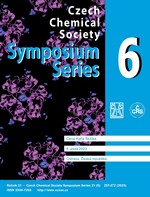Immunomagnetic Assay Using Photon-Upconversion Nanoparticles for the Detection of Cancer Biomarkers
DOI:
https://doi.org/10.54779/ccsss20230266Keywords:
fotón-upkonverzné nanočastice, UCNP, imunostanovenie, prostatický špecifický antigén, ELISA, ULISA, magnetické mikročasticeAbstract
Prostatic carcinoma is the most frequently diagnosed type of cancer within the male population worldwide. The most important prostate cancer biomarker is the prostate-specific antigen (PSA). Changes in PSA concentration may occur in very narrow ranges, making ultrasensitive analytical methods necessary. Enzyme-linked immunosorbent assay (ELISA) is considered the gold standard of analytical methods. It utilizes microtiter plates as solid phase and enzyme-based labels. However, ELISAs are often not sensitive enough for early-stage detection of subclinical levels of PSA. To enhance the sensitivity, it is possible to introduce suitable alternatives for both the solid phase and the label.
Our work focuses on the use of magnetic microparticles (MBs) and photon-upconversion nanoparticles (MBs) as alternatives for solid phase and the label, respectively. The superparamagnetic properties and higher specific surface of MBs allows for analyte preconcentration and simple magnetic separation of the immunocomplex. UCNPs, on the other hand, are nanocrystals exhibiting anti-Stokes luminescence (converting light in the NIR region to visible light). After surface modification, it is possible to utilize UCNPs as labels in the upconversion-linked immunosorbent assay (ULISA), significantly enhancing the sensitivity. We have developed and optimized ELISA and ULISA assays for the detection of PSA and compared their parameters with the equivalent assays utilizing MBs as solid phase. Moreover, we have developed a novel ULISA method with an additional magnetic preconcentration step to further enhance sensitivity, providing a limit of detection of 0.46 pg mL–1.




